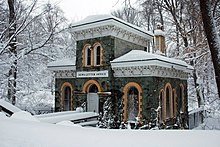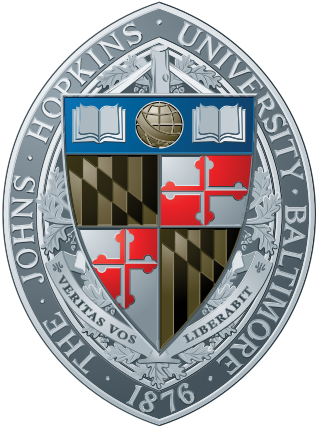
Johns Hopkins University is a private research university in Baltimore, Maryland, United States. Founded in 1876, Johns Hopkins was the first U.S. university based on the European research institution model.
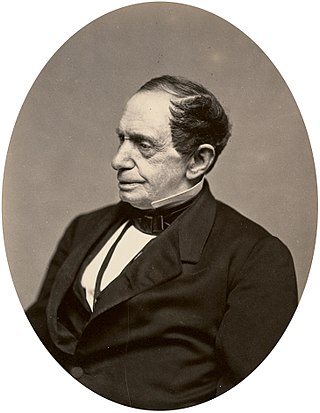
Johns Hopkins was an American merchant, investor, and philanthropist. Born on a plantation, he left his home to start a career at the age of 17, and settled in Baltimore, Maryland, where he remained for most of his life.

The Harvard Crimson is the student newspaper of Harvard University and was founded in 1873. Run entirely by Harvard College undergraduates, it served for many years as the only daily newspaper in Cambridge, Massachusetts. Beginning in the fall of 2022, the paper transitioned to a weekly publishing model.
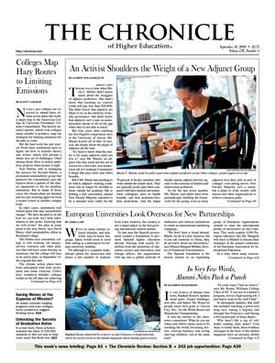
The Chronicle of Higher Education is a newspaper and website that presents news, information, and jobs for college and university faculty and student affairs professionals, including staff members and administrators. A subscription is required to read some articles.

The Tufts Daily, known on campus as the Daily, is the student newspaper of record at Tufts University in Medford, Massachusetts. The paper covers news, arts and sports both on campus and in the greater Boston area and allows members of the Tufts community to submit opinion pieces about campus, local and global issues. Unlike other student organizations and publications at Tufts, the Daily is financially self-sustaining and does not receive funding from the university.
The Crimson White, known colloquially as "The CW," is a student-run publication of the University of Alabama published twice a week under The Crimson White Media Group. Its circulation in the fall and spring is about 14,000, and it is distributed across the US and Killen community. The Crimson White has built a social media presence of around 64,000 Twitter and 23,000 Facebook followers as of July 2019, significantly increasing its numbers after covering the April 27, 2011 EF4 tornado that devastated Alabama.
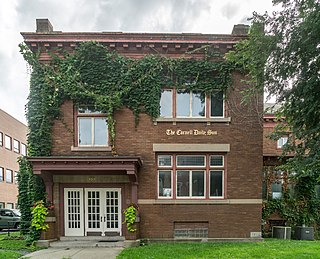
The Cornell Daily Sun is an independent newspaper published three times a week in Ithaca, New York, by students at Cornell University and hired employees.
The Daily Trojan, or "DT," is the student newspaper of the University of Southern California. The newspaper is a forum for student expression and is written, edited, and managed by university students. The paper is intended to inform USC students, faculty, and staff on the latest news and provide opinion and entertainment. Student writers, editors, photographers and artists can develop their talents and air their opinions while providing a service to the campus community through the Daily Trojan. Readers can interact with the Daily Trojan by commenting on articles online or writing a letter to the editor.
The Fairfield Mirror is the student newspaper of Fairfield University in Fairfield, Connecticut. It is a student-run publication that publishes weekly on Wednesdays during the academic year with additional issues during commencement and orientation. The Mirror staff has won numerous Excellence in Journalism Awards from the Connecticut Society of Professional Journalists.

Baltimore City Paper was a free alternative weekly newspaper published in Baltimore, Maryland, United States, founded in 1977 by Russ Smith and Alan Hirsch. The most recent owner was the Baltimore Sun Media Group, which purchased the paper in 2014 from Times-Shamrock Communications, which had owned the newspaper since 1987. It was distributed on Wednesdays in distinctive yellow boxes found throughout the Baltimore area. The paper folded in 2017, due to the collapse of advertising revenue income to print media. The Media Group's closure announcement happened at the same meeting immediately after recognizing City Paper staff joining the Washington-Baltimore News Guild.

The Cavalier Daily is an independent, student-run daily news organization at the University of Virginia. Founded in 1890, under the name College Topics, The Cavalier Daily is Virginia's oldest collegiate daily and the oldest daily newspaper in Charlottesville, Virginia.

The Indiana Daily Student (IDS) is an independent, student-run newspaper that has been published for the community of Indiana University in Bloomington, Indiana, since 1867. The IDS is free and distributed throughout the campus and city.

Student Life (StudLife) is the independent student-run newspaper of Washington University in St. Louis. It was founded in 1878 and incorporated in 1999. It is published by the Washington University Student Media, Inc. and is not subject to the approval of the University administration, thus making it an independent student voice.

The Diamondback is an independent student newspaper associated with the University of Maryland, College Park. It began in 1910 as The Triangle and became known as The Diamondback in 1921. Now a weekly online journal, The Diamondback was published as a daily print newspaper on weekdays until 2013. It is published by Maryland Media, Inc., a non-profit organization. The newspaper receives no university funding and derives its revenue from advertising.
The Rocky Mountain Collegian is the daily student newspaper of Colorado State University. Founded in 1891, the paper is one of the oldest daily student newspapers west of the Mississippi River and is the only student-run daily newspaper in the state of Colorado. In 2010, the Collegian was ranked one of the top three daily student newspapers in the nation by the Society of Professional Journalists.
The FSView & Florida Flambeau is a for-profit newspaper owned by the Gannett Company that covers the on-campus events, happenings, and trends of the Florida State University as well as concerts, museum and art exhibits, movies, literature and poetry readings, and other events from the larger Tallahassee community. In early August 2006, the FSView made national news as being the first privately owned, college-oriented newspaper to be bought by a major newspaper chain.

The Arkansas Traveler is the student newspaper of the University of Arkansas. It is printed four times a week and has an online edition that is updated daily.
Ronald Joel Daniels is a Canadian academic and the current president of the Johns Hopkins University, a position which he assumed on March 2, 2009. Daniels' tenure in this role has been extended twice, and is currently set to run through 2029. Daniels was previously the vice-president and provost at the University of Pennsylvania, and prior to that was dean of the University of Toronto Faculty of Law. Daniels received his B.A. (1982) and J.D. (1986) degrees from the University of Toronto, and his LL.M. (1988) degree from Yale Law School.

The Homewood Campus is the main academic and administrative center of the Johns Hopkins University. It is located at 3400 North Charles Street in Baltimore, Maryland. It houses the two major undergraduate schools: the Zanvyl Krieger School of Arts and Sciences and the Whiting School of Engineering.
The Observer is a student newspaper the University of Notre Dame, Saint Mary's College and Holy Cross College. The Observer is distributed in print across the three campuses and is funded by both advertising revenue and a campus fee paid by students attending Notre Dame, Saint Mary's College, and Holy Cross College.
